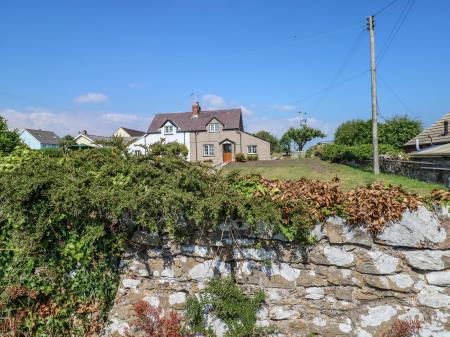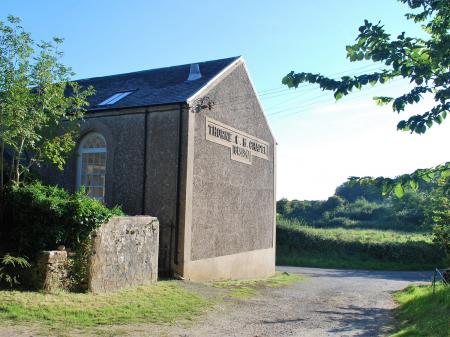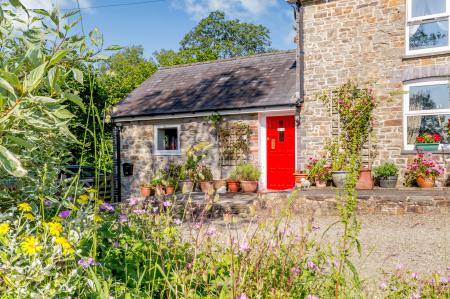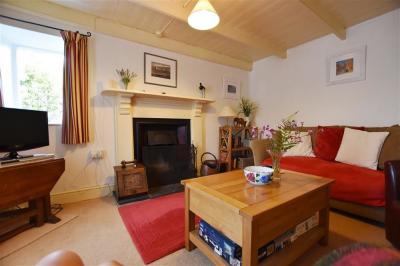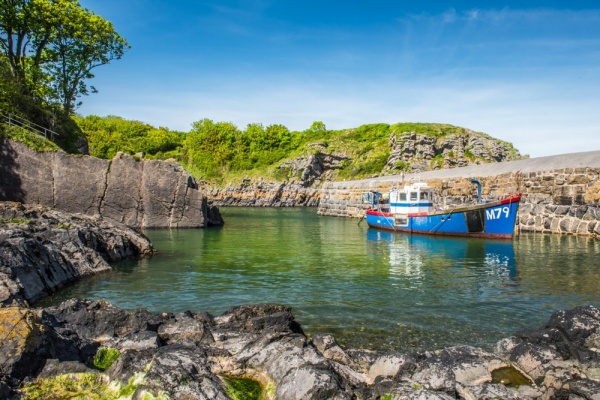
History
The estate centred on Stackpole Court, a stately home which stood just outside Stackpole village. The Court was owned by the Lort family, but in 1698 passed by marriage to the Campbells, Thanes of Cawdor in Scotland. In the 18th century the original Court was rebuilt in Georgian style, surrounded by a walled garden and greenhouses.
The estate was used during WWII as a military training area. After the war the Campbell's returned to their Scottish estates, and the mansion was torn down in 1963, leaving the estate's beaches, parkland, and outbuildings to be administered by the National Trust for public enjoyment.
The coastal part of the estate is a picturesque mix of dramatic, rocky scenery and superb sandy beaches. The most popular beach is at Barafundle Bay, where you can often see bottlenose dolphins. Stackpole Quay is a delightful small harbour used by local fisherman and pleasure-boaters.
At the heart of the estate is the village of Stackpole, moved to its present position in 1735 to make room for the Campbell's new mansion house. Just outside the village is the Stackpole Outdoor Learning Centre, run by the National Trust as a multi-purpose venue.
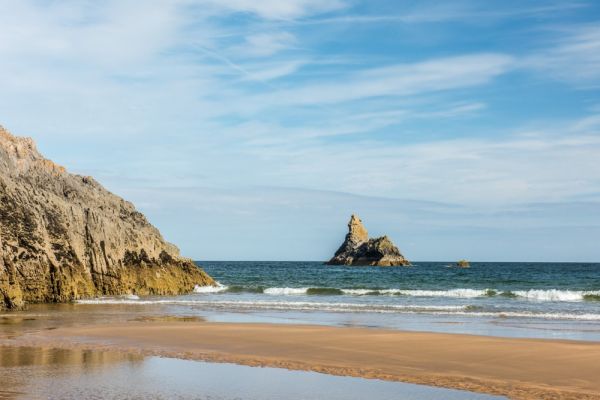
Stackpole Court
Nothing now remains of the Court itself, but the impressive stable block is still standing, as is the Dairy, which now houses an exhibition on the history of the Estate. From the Dairy you can follow a trail down to the Stackpole Lakes, where a path runs beside the water to the Eight Arch Bridge, whose name perfectly describes its form. If you follow the trail far enough it joins up with footpaths running beside the Bosherston Lily Ponds.
The Walled Garden
Another path leads through woodland to the historic walled garden. There are 6 acres of gardens, created in the 1770s for John Campbell II to provide fruit and vegetables for the mansion of Stackpole Court. One of the most interesting historic features in the garden are several heated sunken beds created to raise exotic fruit such as pineapples, melons, and dwarf figs. There are also two picturesque pavilions used by the family as a place to take tea. The Walled Garden is divided in two by a brick wall. One side of the wall is given over to a Sensory Garden and decorated with modern sculptures. At one end of this area is a tearoom.
Stackpole Elidor Church
At Stackpole Elidor is the delightfully secluded church of St James and St Elidyr, dating to the late 12th century and restored by the 1st Earl of Cawdor. The Earl called upon Sir George Gilbert Scott to create a wonderful example of Victorian Gothic architecture that retained many original medieval features including 14th century transept vaulting. In the chancel are 13th century effigies of Sir Elidor de Stackpole and his wife Lady Elspeth. In the Lort Chapel is an imposing memorial to Roger Lort, Lord of Stackpole, who died in 1613. Also in the Lort Chapel is a 5th century pillar stone carved with a Latin inscription.

Bosherston Lily Ponds
The most popular area of the Estate are the Bosherston Lakes, which form part of a National Nature Reserve (NNR). There are 100 acres of lakes, known simply as 'the Lily Ponds'. The Campbells created the lakes from 1760 by damming a trio of narrow valleys.
The Lakes are famous for their water lilies, which carpet the water surface during June. The area is home to a huge population of dragonflies, wildfowl, as well as resident otters. Boardwalks extend out into the lakes to allow visitors to see the lilies up close. The best place to access the Lily Ponds is from the National Trust car park at Bosherston, just past the church.
Devil's Quoit
Miles of footpaths link the lakes to stands of woodland, cliff-top walks, and connect to the South West Coast Path long distance trail. One trail leads to the Devil's Quoit, an ancient standing stone. The stone is sometimes known as Harold's Stone, a reference to Harold Godwinson, the last Saxon king of England. About 150m away are a pair of barrows. An old tradition says that the Devil's Quoit joins other nearby standing stones and dances to a tune played by the Devil himself on his flute.
If you carry on past the standing stone you reach Barafundle Bay. Perhaps even more secluded is Broadhaven beach, reached from a minor road just beyond Bosherston village.
A historic 18th century walled garden forms part of the original estate. The National Trust has leased the garden to Mencap, who use it as a training centre for local adults with learning disabilities, giving them training in horticulture.
There are visitor car parks at Stackpole Quay, Broadhaven South, Lodge Park Wood, and Bosherston. Seasonal charges apply, but National Trust members can park for free. Admission to the Stackpole Estate is otherwise free.
Soapbox
In my opinion the Stackpole Estate is a national treasure and deserves to be much better known. The combination of history and landscape is stunning. From gorgeous sandy beaches to ancient sites, historic churches to secluded harbours, the estate is a picturesque delight. It also has some of the most beautiful coastal landscape in Britain. There are miles of walking trails (and I think I've walked most of them). To stoll beside the Lily Ponds on a long summer evening is a treat simply not to be missed.
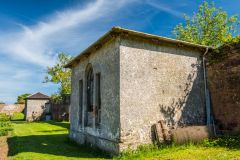






 We've 'tagged' this attraction information to help you find related historic attractions and learn more about major time periods mentioned.
We've 'tagged' this attraction information to help you find related historic attractions and learn more about major time periods mentioned.